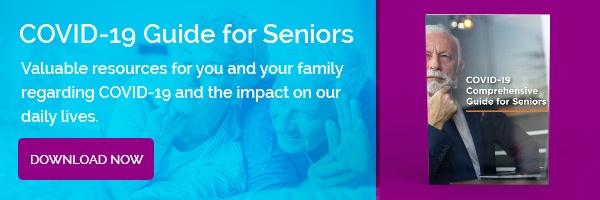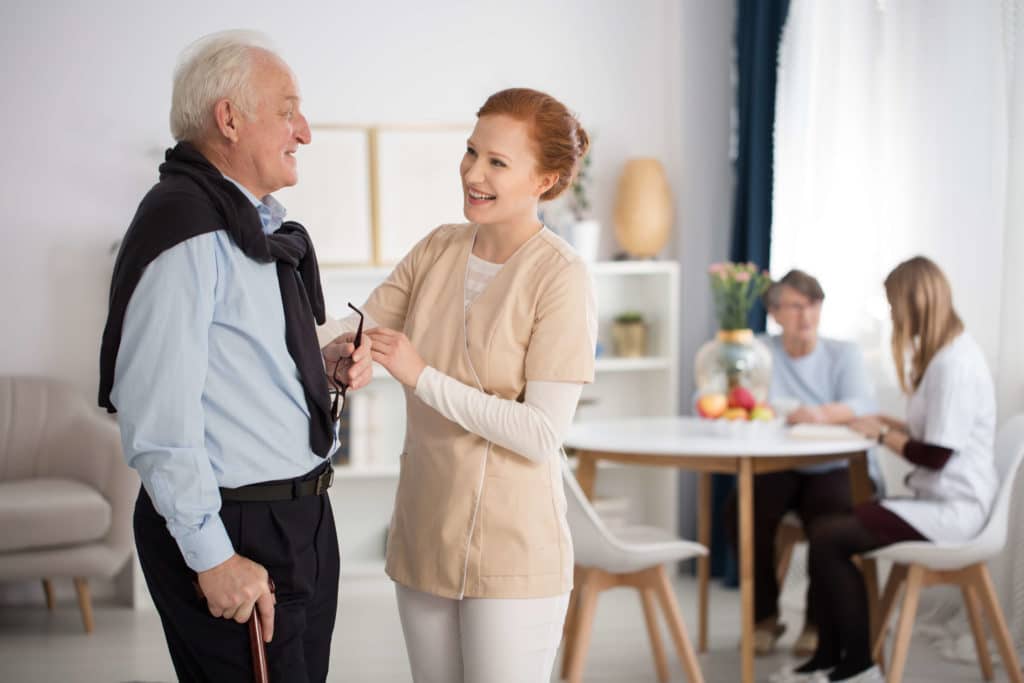There are a number of misconceptions about senior living, but one of the biggest is that senior living is just another name for a nursing home. That’s simply not true. In fact, there are many differences. It’s those distinctions that have helped senior living communities contain the spread of COVID-19, while nursing homes have tragically struggled. Let’s compare.

Defining Senior Living
First, it’s important to understand exactly what senior living is today. You might be surprised that it’s actually an umbrella term for a continuum of care. Senior living communities may offer either one type of care or multiple levels of care on one campus. The continuum of care includes:
- Independent Living – This type of senior living is specifically designed for active seniors who need little daily assistance and want carefree living with a range of social opportunities.
- Assisted Living – This is the next step in the continuum with onsite care, 24-hour supervision and support with daily activities provided. Plus, you’ll still enjoy amenities and social opportunities similar to independent living.
- Memory Care – Here you’ll find an environment specifically designed for those with Alzheimer’s disease and dementia that includes 24/7 support, structured activities and specially-trained team members.
How Senior Living Differs
The differences between senior living communities such as independent living, assisted living and memory care versus nursing homes are vast and include:
- Care – Nursing homes are for seniors with medical conditions that require around-the-clock or specialized care such as wound care, intravenous (IV) therapy, injections, catheter care and monitoring of vital signs and medical equipment. In contrast, assisted living regulations require that residents are medically stable and in independent living, no onsite medical care is available.
- Accommodations – Nursing homes are primarily medical settings so they feel more like hospitals and residents typically live in smaller ‘rooms’, often with a roommate which makes social distancing extremely difficult. Senior living communities on the other hand may feature a range of accommodations from private apartments to free-standing cottages which offer ample room to limit exposure.
- Lifestyle – Unlike nursing homes, senior living communities are focused on lifestyle and wellness with a range of amenities and enrichment opportunities. Families don’t have to worry about their loved ones being alone as these communities are making use of their beautiful outdoor spaces, abundant technology options and some good old fashioned creativity to keep their residents engaged and connected during COVID-19. Vitality Living communities offer daily updates via Facebook Live and can help loved ones connect with video chat.
- Infection Control – Residents in independent living and assisted living typically require less interaction with healthcare providers compared to those in nursing homes and, according to a recent CDC study, this also helps senior living communities better contain the spread of the disease. Senior living communities are well versed in infection control protocols with yearly flu prevention. This means they have training in place, established supply chains and full-time housekeeping team members to clean and disinfect according to CDC guidelines.
You Have Options
Although adult day care and senior centers have closed, you still have options. Senior living communities are open for independent living, assisted living and memory care and have stringent measures in place to keep our residents safe. In addition, as seniors are more vulnerable to COVID-19, senior living communities have been prioritized by states for testing.
To learn more, contact us to schedule a virtual tour!



